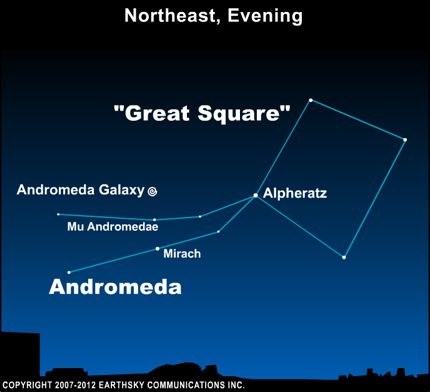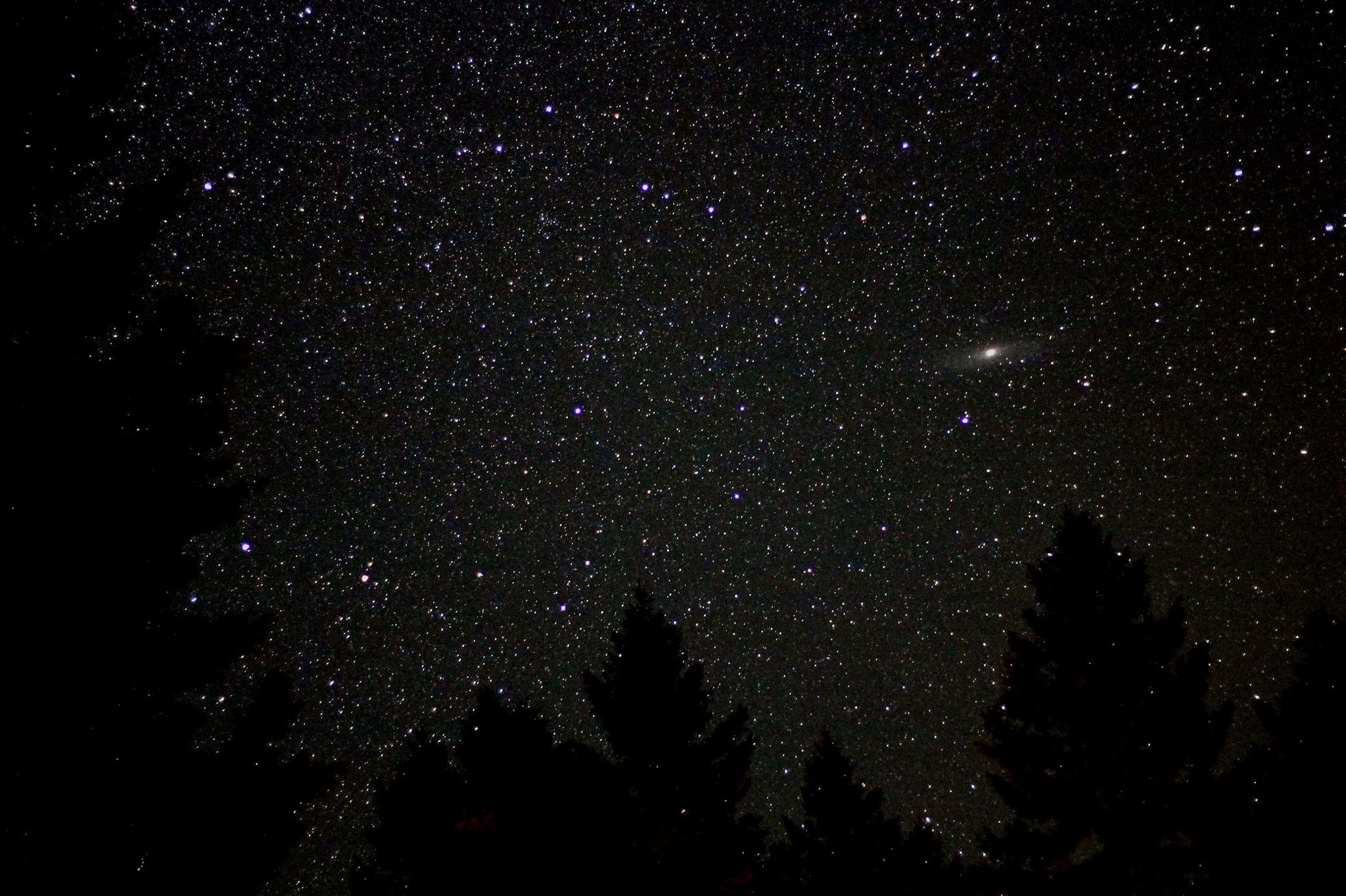
The Great Square of Pegasus looks like a … well … a big square. Four medium-bright stars mark its corners. But if you can think of it instead as a baseball diamond, you can use the Square to find the famous Andromeda galaxy.
It’s the large spiral galaxy next door to our Milky Way and one of the most distant objects visible to the eye alone. Look at the Square on our chart at top. Now imagine the farthest star to the left – Alpheratz – as the third-base star. A line drawn from the opposite first-base star through Alpheratz points in the general direction of the Andromeda galaxy.
For some idea of the Great Square’s size, extend your hand an arm’s length from your eye. You’ll see that any two Great Square stars are farther apart than the width of your hand.
At mid-northern latitudes, the Great Square of Pegasus sparkles over your eastern horizon at about 8 or 9 p.m. in late August and early September. That’s 8 or 9 p.m. local time. Some two weeks from now – in September – the Square will return to the same place in the sky about an hour earlier.
Want to see the Great Square of Pegasus from your specific location on the globe, or at a different time of night or different time of year? Try Stellarium.
Enjoying EarthSky so far? Sign up for our free daily newsletter today!

Star-hopping to the Andromeda galaxy
Now let’s get more specific. If it’s dark enough, you’ll see two streamers of stars flying to the north (or left) of the star Alpheratz on August and September evenings. You might see these two streamers in the pattern of a bugle or a cornucopia.
That pattern isn’t part of Pegasus. It’s the constellation Andromeda the Princess. Along the bottom streamer, star-hop from Alpheratz to the star Mirach. Draw a line from Mirach through the upper streamer star – which is called Mu Andromedae – and go about the same distance again. You’ve just located the Andromeda galaxy!
Read more: Cassiopeia the Queen also points to the Andromeda galaxy
The Andromeda galaxy looks like a large fuzzy patch in a dark sky. If you can’t see this fuzzy patch of light with the unaided eye, maybe your sky isn’t dark enough. Try binoculars! Don’t worry if you miss it tonight, for the Andromeda galaxy will be in the evening sky from now until spring.

Bottom line: The Andromeda galaxy can be seen somewhere in our sky for much of every year. Every August, it’s ascending in the sky during the evening hours. This post explains how to use the Great Square of Pegasus to find the Andromeda galaxy.











